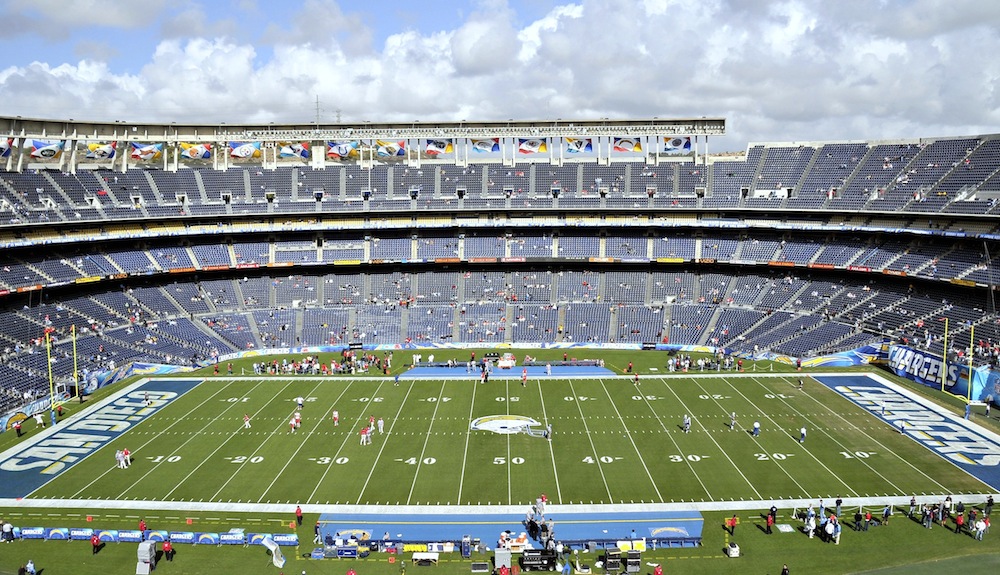The San Diego Chargers released a 110-page report regarding details of a $1.8 billion plan for a new football stadium and convention center in downtown San Diego.
The stadium and convention center will be funded by a 4% tax increase on hotel stays. The San Diego Union-Tribune reports that the proposed hotel tax rate, 16.5%, will be one of the country’s highest.
But the rate will spare taxpayers of a large financial burden. Funding will come from the hotel tax increase and $650 million from the Chargers and the NFL.
The Chargers will sign a 30-year lease and a non-relocation agreement, and they will be responsible for any construction cost overruns and future stadium improvements.
The new report is the first step toward gaining 70,000 signatures by June so that the plan can be included on California ballots this November.
A final architectural plan has not been determined. Options include building the convention center either underneath or next to the stadium. Dubbed the "convadium," it will be built near Petco Park, where the San Diego Padres of MLB play.
Qualcomm Stadium, the Chargers' current 70,000-seat home, was built in 1967 and is the NFL’s fifth-oldest stadium. The team desires a new home, either in San Diego or elsewhere.
Los Angeles has been a possibility for the last several years. This winter, the NFL approved the St. Louis Rams’ proposal for a new $3 billion stadium in Inglewood (just outside of L.A.), and the league rejected a joint stadium venture in the city for the Chargers and Oakland Raiders. The Chargers have a year to decide whether they want to move to Los Angeles and share a stadium with the Rams.
Related Stories
| Aug 11, 2010
Nurturing the Community
The best seat in the house at the new Seahawks Stadium in Seattle isn't on the 50-yard line. It's in the southeast corner, at the very top of the upper bowl. "From there you have a corner-to-corner view of the field and an inspiring grasp of the surrounding city," says Kelly Kerns, project leader with architect/engineer Ellerbe Becket, Kansas City, Mo.
| Aug 11, 2010
Financial Wizardry Builds a Community
At 69 square miles, Vineland is New Jersey's largest city, at least in geographic area, and it has a rich history. It was established in 1861 as a planned community (well before there were such things) by the utopian Charles Landis. It was in Vineland that Dr. Thomas Welch found a way to preserve grape juice without fermenting it, creating a wine substitute for church use (the town was dry).
| Aug 11, 2010
Integrated Project Delivery builds a brave, new BIM world
Three-dimensional information, such as that provided by building information modeling, allows all members of the Building Team to visualize the many components of a project and how they work together. BIM and other 3D tools convey the idea and intent of the designer to the entire Building Team and lay the groundwork for integrated project delivery.
| Aug 11, 2010
Bronze Award: Alumni Gymnasium Renovation, Dartmouth College Hanover, N.H.
At a time when institutions of higher learning are spending tens of millions of dollars erecting massive, cutting-edge recreation and fitness centers, Dartmouth College in Hanover, N.H., decided to take a more modest, historical approach. Instead of building an ultra-grand new facility, the university chose to breathe new life into its landmark Alumni Gymnasium by transforming the outdated 99-y...







